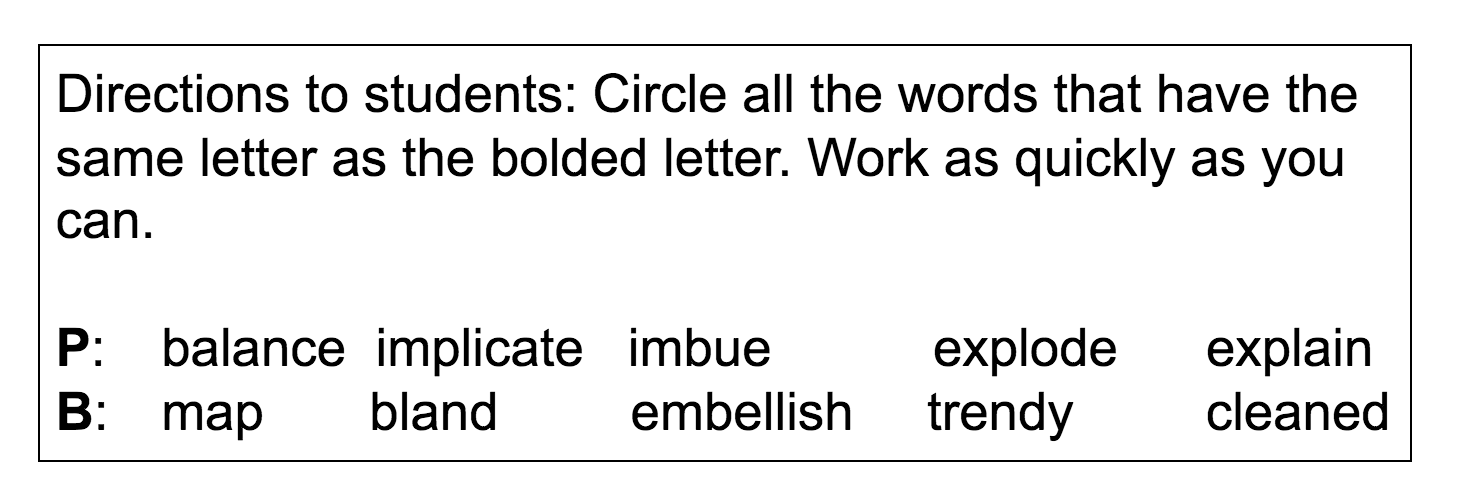This introduction to the Somali language describes some of the major differences between Somali and English and the implications for writing tutors and instructors, and suggests the use of targeted mini-lessons. The editors of the MinneTESOL Journal would like to thank Abdiasis Hirsi who played in instrumental role in mapping the comparisons you see below.
Center for Academic Excellence (CAE) writing tutors at Metropolitan State University, St. Paul, Minnesota, work with many multilingual speakers. The CAE is an interdisciplinary writing center; students come to the center at any stage in their writing process. Training varies by institution, but typically writing tutors are trained to identify patterns, provide examples, and focus on global issues such as organization, focus, and rhetorical appeals before local issues such as grammar (Fitzgerald & Ianetta, 2016). Writing tutors are neither editors nor proofreaders; the ultimate goal is to produce better writers, not better writing.
However, grammar remains an important component of language, and teachers frequently comment on and subtract points for grammar. This is an especially important issue for English Language Learners (ELLs) who often struggle with English and sometimes apply the grammatical and syntactical rules of their native languages to their writing. As language learning advances ELLs are less likely to do this (Thonus, 2014), but for many ELLs grammar is a big concern.
This paper has two purposes: to help college-level writing tutors build rapport with students of Somali heritage through a greater understanding of the Somali language and to offer tutors suggestions for working with Somali students. To accomplish these goals, this paper provides a nonlinguistic introduction to the Somali language, describes some of the major differences between Somali and English, discusses the implications for tutors, and suggests mini-lessons during tutorials. The paper is aimed at writing tutors, but may prove useful to writing instructors as well.
Introduction to the Somali Language
This is an excerpt of a Somali language British Broadcasting Corporation news article dated November 2, 2014.
Isticmaalka aan xadidnayn ee shidaalka aan nadiifka ahayn waa in la joojiyo si dhaqso ah si looga hortago isbadal cimilo oo qatar ah. Warbixin cusub ee isbadalka cimilada oo ay soo saartay kooxda IPCC ee Qaramada Midoobay ay taageerto ayaa sheegtay fariintan. IPCC ayaa ku dooday in marka la gaaro 2050 in inta badan korontada laga isticmaalo adduunka in laga dhalin karo hab karbon yar leh.
And this is the English version.
The unrestricted use of fossil fuels should be phased out by 2100, if the world is to avoid dangerous climate change, a UN-backed expert panel says. The Intergovernmental Panel on Climate Change’s Synthesis Report summarises the causes, impacts of, and solutions to rising temperatures. It says most of the world’s electricity can – and must – be produced from low-carbon sources by 2050.
A quick scan of the two passages shows that Somali is written in the Roman alphabet, it uses a lot of double vowels, and the date 2050 appears in the middle of the Somali sentence and at the end of the English sentence, which suggests Somali has a different syntactical order than English.
The Somali language is Cushitic, which is an Afro-Asiatic language family with around thirty languages and is spoken in the Horn of Africa. Other Cushitic languages are Oromo (Ethiopia and Kenya), Afar (Eritrea), Sidamo (Ethiopia), and Bedawi (Sudan). Civil wars and the Somali diaspora make it hard to arrive at an exact number of Somali speakers, but estimates range from 13 million to more than 25 million (University of California Los Angeles Language Materials Project, n.d.).
There are three major dialects: Northern (the most common and the basis for standard Somali), Benadir (Indian coast) and May (southern Somalia). The Northern dialect has the most prestige in part because it’s the dialect most used by Somali poets who are highly respected (Saeed, 1999). Many speakers can understand all dialects, but people from remote areas may not be able to (Hirsi, 2014, personal communication).
Most borrowed words are Arabic, but Somali also borrows words from English, French, and Italian, the languages of former colonizers (UCLA, n.d.). Many names, such as Mohamed, Ahmed, Hasan, Fadumo, Ayesha, come from the Arabic language, but other names originate in Somali and convey character or other traits such as Róoble (Rain Bearer), Warsáme (Bearer of Good News), and Káaha (Distant Light, Dawn) (Saeed, 1999). A Roman alphabet was finally adopted for the unwritten language in 1972 after other writing systems – Arabic and indigenous – were debated and rejected (Saeed, 1999).
The basic clause order is subject-object-verb (I cake eat; A man tea drank) (UCLA, n.d.). In general, though, the order is more flexible than English. Somali speakers who have lived in the U.S. tend to use the English word order – subject-verb-object — more often (Hirsi, 2014). Each sentence has one element – a noun or a verb – designated as the focus of the sentence (Saeed, 1999). In English, speakers and writers might emphasize a word by saying a word louder or by using italics to clarify meaning: The girl ate the rice; The girl ate the rice. But the Somali language uses short marker words to indicate the focus of the sentence.
For example, one way to say “The girl ate the rice” is:
| Gabádhu | baríiska | báy | cuntay |
| The girl | the rice (focus word) | (marker word+she) | ate (Orwin, 1995). |
It is a somewhat tonal language; tones tend to mark gender and number distinctions. For example, inan is boy and inán is girl (Hirsi, 2014).
According to Orwin (1995), there is no word for please in Somali (p. 13). When English speakers want something, they might ask, “Would you please give me . . .” A Somali speaker might use a command, for example, “Give me . . .” “Many writers have commented on the egalitarian nature of Somali society . . . there has been little written on sociolinguistic topics like politeness, but it seems clear that the ready use of imperatives, or commands, along with the lack of polite pronouns, honorifics, etc. reflect that lack of social hierarchy felt amongst Somalis” (Saeed, 1999, p. 270).
Somali-English Differences and Implications for Tutors
In this paper, we offer a series of tables illustrating some of the differences between the Somali and English alphabets, nouns/articles, verbs, prepositions, and pronouns; the tables are followed by examples from a Somali student paper and mini-lesson suggestions.
Abdiasis Hirsi, a native Somali speaker who works as an ESL teacher in Minneapolis Public Schools and runs a Minneapolis tutoring center, Lightbulb Community Learning Center, believes that some Somali students at the college level can benefit from mini-lessons in basic English grammar. They often arrive in the U.S. from refugee camps without a traditional textbook education in English or even in their own language (Hirsi, 2014-2016). These students are considered “ear learners” and are often more comfortable with oral learning (Weigle, 2014). Writing tutors, who depend a great deal on social interaction and negotiation of meaning, can act as a bridge between oral and written learning. Stephen North, one of the most influential writing center scholars, wrote, “talk is everything” (1984, p. 444).
In the following mini-lessons, tutors can encourage both negotiation and discussion. Because tutors are not editors, they should focus on just a few patterns of error (Fitzgerald & Ianetta, 2016) in five- to ten-minute lessons. The suggestions are not exhaustive; what works for one student may not work with another. These suggestions ought to be seen as stepping-stones for further efforts to address and teach these differences.
Key Differences: Vowels, Consonants, and Sounds
Somali does not use the letters p, v, and z, and there is a one-to-one relationship between vowel letters and vowel sounds; English has multiple sounds per vowel. Table 1 shows these key differences.
Table 1. Somali and English Sound-Letter Correspondence
| Somali | English |
| Consonants: b, d, dh, g, q, ‘ (glottal stop — a sound produced when airflow is obstructed), t, k, f, s, sh, kh, x, c, h, j, m, n, r, l, w, y
Vowels: i, e, a, o, u, aa, ee, ii, oo, uu (Hirsi, 2014) Uses all letters of the English alphabet except p, v, and z (Putman and Noor, 1993). Natives of Somalia often learn Arabic, which has the z sound, but not p or v (Hirsi, 2014). |
Consonants: b, c, d, f, g, h, j, k, l, m, n, p, q, r, s, t, v, w, x, y, z
Vowels: a, e, i, o, u (y) |
| There is a one-to-one relationship between vowel letters and vowel sounds (Putman and Noor, 1993). | There are multiple sounds per vowel (e.g., rope, top; life, live; cat, Kate; up, put). |
| Double vowels and consonants are pronounced with greater emphasis (Putman and Noor, 1993). | Double letters are not emphasized or lengthened. |
Implications for tutors
Somali students might misspell words using p, v, or z because they are less familiar with those letters and sounds, and this tendency can add ambiguity to the text. For example: Sowda couldn’t sit at her friend’s home because her little baby was sleeping at home, the other one-year-old son was on her lab …
If a student’s paper has many and consistent spelling mistakes related to these differences, remind the student that it’s common for Somali students to replace the letter p with the letter b because there is no letter p in Somali.
Invite the student to say and write down other words with the letters p and b to reinforce the difference. Recommend that the student make a list for practice and reference. Repetition may help strengthen the student’s spelling ability (Lightbrown & Spada, 2013).
Word and letter recognition fluency exercises can help. Here is a simple exercise (adapted from Stoller & Grabe, 2011) targeting the p/b distinction.
Figure 1. Exercise Targeting P/B Distinction
Key Differences: Nouns and Articles
Most nouns are countable in Somali; both countable and noncountable nouns are common in English. Definite articles in Somali are suffixes and there is no indefinite article, as spelled out in Table 2.
Table 2. Somali and English Nouns and Articles
| Somali | English |
Nouns change (inflect) depending on whether they’re definite or indefinite.
|
Definite and indefinite nouns do not change (inflect).
|
Nouns are masculine or feminine (Putman and Noor, 1993).
|
Nouns are not masculine or feminine. |
| The majority of nouns are countable (Saeed, 1999). | Both countable and noncountable nouns are common.
|
There is no indefinite article. Indefinite nouns are expressed without an article (Putman and Noor, 1993).
The definite article is a suffix that begins with k- for masculine nouns, t- for feminine nouns (Orwin, 1995). |
English has both definite (the) and indefinite (a, an) articles.
|
Implications for Tutors
Countable and noncountable nouns in English are modified in different ways (less joy/fewer headaches; many students/much noise). This might be confusing to Somali speakers in part because few nouns in Somali are noncountable. Unfortunately, much of this must be memorized.
English articles are also confusing for Somali speakers and writers. The Somali language treats articles differently, so student writers might be prone to omitting articles or inserting the wrong one. For example: … and asked to come for a minute to see wedding ceremony; After minutes all neighbors came together …
To all ELLs, articles often seem arbitrary and not grounded by rules. In many cases, it may be best to advise Somali students not to worry about article errors; they typically don’t impede clarity and clarity is the first mission of good writing. It’s better for the student to focus on errors that confuse the reader (Fitzgerald & Ianetta, 2016).
Key Differences: Verbs
There are many differences between Somali and English: Somali has fewer verb tenses; there are no perfect tenses; the passive voice exists in Somali but the agent of the action is often left off; and the present progressive tense is used differently in Somali than in English. These key differences are presented in Table 3 below.
| Somali | English |
| There are six verb tenses:simple present, simple past, present progressive, past progressive, habitual past and simple future.There are no perfect tenses (Hirsi, 2014). | There are twelve verb tenses: simple present, past, and future; present, past, and future perfect; present, past, and future progressive; present, past, and future perfect progressive. |
Simple present is used for habitual action:
|
Simple present is used for habitual action:
|
Verbs usually appear at the end of sentences, but they don’t have to:
|
Verbs typically precede objects:
|
Present progressive tense can be used for an action happening now OR in the near future (Orwin, 1995).Waan cúnayaa:
|
Present progressive tense is used for action happening now.
|
The passive voice exists, but speakers often leave off the agent of the action because:
Passive can be formed with the impersonal pronoun “one”:
|
Passive voice, in which subject-verb order is reversed, is fairly common.
|
| Future tense can be expressed by using an infinitive, doon, which, used alone, means “to want” (Orwin, 1995). | Future tense is typically indicated with helping verbs like “will” and “is going to.”
|
Implications for Tutors
Some Somali writers might use the perfect tenses incorrectly because the Somali language doesn’t have the perfect tenses (Hirsi, 2014). Here are some examples.
In general, adopting children is not bad, it is really another opportunity of saving many children’s lives after they lost their real parents …
She was arrested and asked where she took the baby; she told that the baby had died after she taken to the Berbera region …
A tutor might explain that a native English speaker could interpret the sentence, “…the baby had died after she taken to the Berbera region…” in a few different ways, “she had taken it” in which she means the agent (a mother, perhaps) or “she was taken” (agentless passive), where she is the baby. Discussing these alternative interpretations with the student can help illustrate how verb forms affect meaning.
Ask a student to talk about how these sentences are expressed in Somali. Inviting this kind of reflection increases a tutor’s empathy for the difficulty of learning another language (Thonus, 2014). It also helps build rapport between student and tutor and offers a student the chance to reverse roles and teach the tutor.
Another idea is to use timelines (see, for example, Betty S. Azar’s Understanding and Using English Grammar Chartbook, 2009) to illustrate the differences between the tenses for visual learners. Kinesthetic and auditory learners might enjoy acting out the verb tenses with the tutor.
Have the student write sentences using the different tenses and explain the subtle differences; if the student struggles, the tutor can assist. This social and collaborative technique, in which the tutor and student negotiate the meaning of the differences, helps the student reinforce and consolidate new information (Hall, 2011).
Key Differences: Prepositions
Somali has only four words specifically designated as prepositions; English has many prepositions, as made clear in Table 4.
Table 4. Somali and English Prepositions
| Somali | English |
| Prepositions tend not to be short words because the words perform other grammatical functions as well; they change depending on what else is going on in the sentence (Hirsi, 2014). | Prepositions tend to be short words, always precede a noun or pronoun, and often indicate direction, location, or time. Prepositions relate one sentence element (the object of the preposition) to another sentence element.
|
Some preposition-like functions are fulfilled by nouns or words of place (Orwin, 1995):
|
|
| There are only four prepositions and they always precede the verb (Orwin, 1995).Gabadhu laybreeriga way ku qortaa.The girl the library she in she writes. | There are many, many prepositions. |
Implications for Tutors
Prepositions are confusing for many multilinguals including Somali students. The most common problem is that students choose the incorrect preposition or skip a necessary preposition. Here are some examples.
One day, Sowda was at home, one of her neighbors and was a friend of her, who lived [in] an apartment
… all neighbors came together and searched [for] the baby everywhere around the house …
As with articles, prepositions generally cannot be learned by following rules and must be memorized. However, misuse of prepositions is more likely to affect clarity. Drawing attention to the differences in prepositions between Somali and English is useful because a linguistic feature must first be consciously noticed in order for learning to occur (Schmidt, 1990; 2010).
Ask the student how different prepositions change the meaning of a sentence (e.g., “The bird flew [into, over, among, between, around, under] the trees.”). When possible, visual and kinesthetic learners might benefit from drawing representative pictures or acting out the prepositions.
Have the student reflect on the differences between English and Somali for preposition use. If possible, have the student provide some literal translations from Somali.
A tutor might also create a list of frequently misused prepositions in the student’s paper. Ask the student to write several sentences using each of the prepositions correctly for post-tutorial reference and practice.
Because prepositions are so idiomatic, phrasal verb dictionaries and learner dictionaries such as the Longman Dictionary of Contemporary English may be useful. Another option is to type a guiding question such as “What preposition is used after _____?” into a search engine and let the autocomplete feature offer suggestions (Zimmerman, 2009).
Key Differences: Pronouns
There are no direct translations in Somali for third person object pronouns, which can lead to ambiguity in student texts. The comparison with English is shown in Table 5.
Table 5. Somali and English Pronouns
| Somali | English |
There are no direct translations for third person object pronouns (Orwin, 1995).
|
There are third person object pronouns such as it, him, her, them.
|
Implications for Tutors
Somali writers are prone to skipping third person object pronouns. Here is an example.
…she told that the baby had died after she taken to the Berbera region …
The tutor can note that if the pronoun is not in the sentence to provide context, readers will be confused; the tutor across the table represents such an audience (Fitzgerald & Ianetta, 2016). Using examples from a student’s paper can be especially effective during a tutorial (Larsen-Freeman, 2014), but tutors can also create other ambiguous examples with the student.
Have the student reflect on the significant differences between English and Somali for pronoun use. If possible, have the student provide some literal translations from Somali. Analytically inclined learners might benefit from creating a table that shows these differences. This table could then be used for practice and reference afterward.
Conclusion
College-level writing tutors can better serve Somali students by learning some of the basic differences between Somali and English. When tutors see recurring grammatical and/or syntax errors, they can ask students to reflect on and talk about the structure of their native language. A tutor can accompany this shared reflection with a mini-lesson on a grammar or writing point. Multilingual students are bound to appreciate this extra effort and their writing is likely to improve. And if student writing improves, writing tutors have done their jobs well.
Mahadsanid. Thank you. Nabad gelyo. Goodbye!
References
Fitzgerald, L., & Ianetta, M. (2016). The Oxford guide for writing tutors: practice and research. New York, NY: Oxford University Press.
Grabe, W., & Stoller, F. L. (2011). Teaching and researching reading (2nd ed.) New York, NY: Longman.
Larsen-Freeman, D. (2014). Teaching grammar. In M. Celce-Murcia, D. Brinton, & D. Bohlke (Eds.), Teaching English as a second or foreign language (pp. 256-271). Boston, MA: National Geographic Learning.
Liberman, M. (1998). Linguistics 202/502 Introduction to Field Linguistics, course notes. University of Pennsylvania. Retrieved from http://www.ling.upenn.edu/courses/Spring_1998/ling202/ and from http://www.ling.upenn.edu/courses/Spring_1998/ling202/nouns.htm and from http://www.ling.upenn.edu/courses/Spring_1998/ling202/prepositions.htm
Lightbrown, Patsy & Spada, Nina (2013). How Languages are Learned (4th ed.). Oxford: Oxford University Press.
McGrath, M. (2014, November 2). Fossil fuels should be phased out by 2100 says IPCC. BBC. Retrieved from http://www.bbc.com/news/science-environment-29855884
North, S. M. (1984). The idea of a writing center. College English, 46(5), 433-446. Retrieved from http://www.jstor.org/stable/377047
Orwin, M. (1995). Colloquial Somali: A complete language course. London and New York: Routledge, Taylor and Francis Group.
Putman, D. B., & Noor, M. C. (1993). The Somalis: Their history and culture, refugee [Fact Sheet No. 9]. International Rescue Committee. Retrieved from http://www.rescue.org/sites/default/files/migrated/where/united_states_salt_lake_city_ut/the-somalis-a-cultural-profile.pdf
Saeed, J. (1999). Somali (Vol. 10). Amsterdam/Philadelphia: John Benjamins Publishing Company.
Schmidt, R. (1990). The role of consciousness in second language learning. Applied Linguistics, 11(1), 17-46.
Schmidt, R. (2010). Attention, awareness, and individual differences in language learning. In W. M. Chan, S. Chi, K. N. Cin, J. Istanto, M. Nagami, J. W. Sew, T. Suthiwan, & I. Walker, Proceedings of CLaSIC 2010, Singapore, December 2-4 (pp. 721-737). Singapore: National University of Singapore, Centre for Language Studies.
Thonus, T. (2014). Tutoring multilingual students: Shattering the myths. Journal of College Reading and Learning, 44(2), 200-213.
University of California, Los Angeles Language Materials Project. (n.d.). Teaching resources for less commonly taught languages. Retrieved from http://www.lmp.ucla.edu/Profile.aspx?LangID=202&menu=004
Warbixinta isbadalka cimilada. (2014, November 2). BBC Somali. Retrieved from http://www.bbc.com/somali/aqoon_guud/2014/11/141102_climate_change
Weigle, S. C. (2014). Considerations for teaching second language writing. In M. Celce-Murcia, D. Brinton, & D. Bohlke (Eds.), Teaching English as a second or foreign language (pp. 222-237). Boston, MA: National Geographic Learning.
Zimmerman, C. B. (2009). Word knowledge: A vocabulary teacher’s handbook. New York: Oxford University Press.








